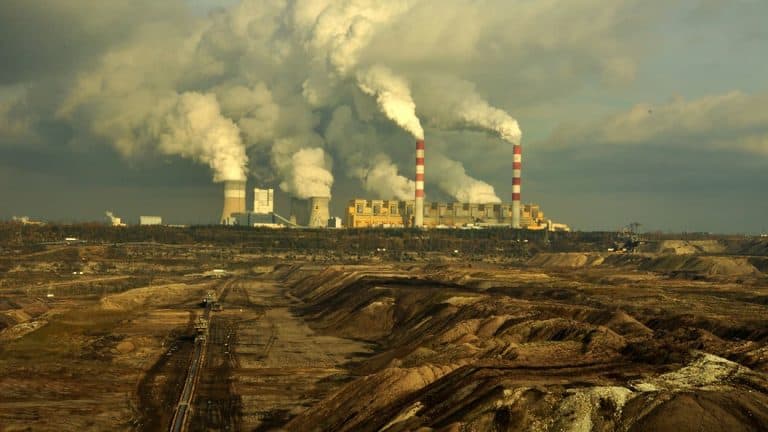
Furnaces are commonly used in various industrial processes to generate heat. They burn fossil fuels such as natural gas, oil, or coal to generate heat. Unfortunately, this also releases greenhouse gases, such as CO2, into the atmosphere. The increased concentrations of these gases in the atmosphere contribute to climate change. However, furnace modification is an effective way of minimizing the CO2 emission from furnaces.
1. Improved Combustion Efficiency:
The efficiency of the furnace combustion process plays a significant role in the number of CO2 emissions produced. By increasing the efficiency of the combustion process, less fuel is burned to produce the same amount of heat, resulting in fewer CO2 emissions. There are several ways to improve the combustion efficiency of a furnace, including:
-
Optimizing the fuel-to-air ratio:
Ensuring the correct fuel-to-air ratio burns fuel completely and efficiently with minimal waste. Optimizing the ratio makes the combustion process more efficient and produces fewer CO2 emissions.
-
Installing a more efficient burner:
Modern furnaces come equipped with high-efficiency burners that reduce fuel consumption and produce less CO2. By upgrading your furnace with a modern burner, and you can improve its efficiency and reduce its carbon footprint.
-
Insulating the furnace:
The surrounding environment loses less heat by insulating the furnace, reducing the fuel required to maintain a consistent temperature. Insulating the furnace also reduces fuel consumption, thereby reducing the number of CO2 emissions produced.
2. Alternative Fuels
In addition to improving combustion efficiency, alternative fuels are another way to minimize CO2 emissions from furnaces. Unlike fossil fuels, alternative fuels produce less CO2 when burned. Here are some examples of alternative fuels that can use in furnaces.
-
Biomass:
Biomass is a renewable and low-carbon fuel source from organic matter such as wood chips, sawdust, and agricultural waste. Burning biomass produces less CO2 than fossil fuels, making it a more sustainable alternative.
-
Hydrogen:
Hydrogen is a zero-carbon fuel that can burn in furnaces to produce heat. However, the production of hydrogen requires energy. If the energy used to produce it comes from fossil fuels, then the overall carbon footprint may not be significantly lower than using fossil fuels.
-
Biofuels:
Organic matter, such as vegetable oils or animal fats, produces biofuels. Furnaces can use these fuels as an alternative to fossil fuels, reducing CO2 emissions.
3. Waste Heat Recovery
Waste heat recovery is another way to minimize CO2 emissions from furnaces. The furnace loses a lot of heat to the surrounding environment. The furnace improves energy efficiency by capturing and reusing this heat, reducing the fuel needed to produce the same heat. This results in fewer CO2 emissions.
Waste heat recovery can achieve in several ways, such as:
-
Installing heat exchangers:
Heat exchangers transfer heat from the furnace exhaust gases to water or air, which can heat other facility areas.
-
Using a regenerative furnace:
A regenerative furnace uses a heat storage unit to recover and reuse waste heat. The unit is filled with a high-heat capacity material, absorbing excess heat from the exhaust gases. The stored heat is then released back into the furnace during the next heating cycle.
-
Installing a waste heat boiler:
It recovers heat from the exhaust gases of the furnace. The heat is used to produce steam, generate electricity or perform other industrial processes.
4. Carbon Capture and Storage (CCS)
Carbon capture and storage (CCS) is a relatively new technology that can capture and store the CO2 emitted from furnaces. The technology involves capturing the CO2 emitted during combustion and storing it underground. CCS can help reduce the amount of CO2 released into the atmosphere, but it is still costly and complex.
CCS involves three main steps: capturing the CO2, transporting it to the storage location, and storing it underground. There are several ways to capture CO2, such as:
-
Post-combustion capture:
This method involves capturing CO2 from the flue gas after combustion.
-
Pre-combustion capture:
This method involves converting the fuel into a gas before combustion and capturing the CO2 in the resulting gas.
-
Oxy-fuel combustion:
Oxy-fuel combustion involves burning the fuel with oxygen instead of air, producing a predominantly CO2 flue gas. The CO2 can then capture from the flue gas.
Conclusion
Furnace modification is vital in reducing the CO2 emissions from industrial processes. Improved combustion efficiency, alternative fuels, waste heat recovery, and carbon capture and storage are all effective ways of minimizing the environmental impact of furnaces. In addition to reducing CO2 emissions, these modifications can help companies save money on energy costs and improve their sustainability.
- Contact us (‘Precons Furnaces‘) immediately to learn more about our products or get a quote.
- Follow our Social Media pages for recent updates. Facebook | Instagram